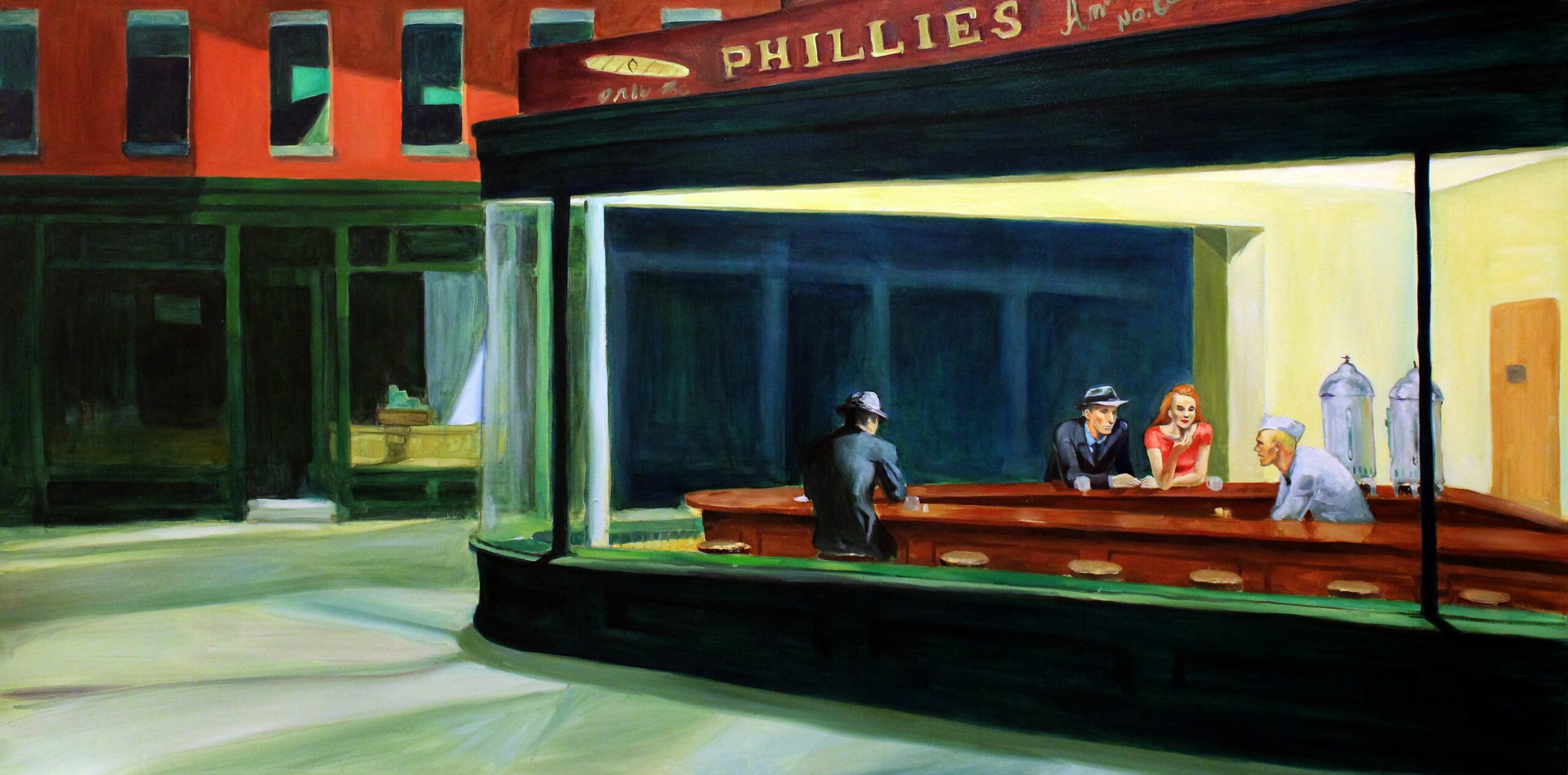Nighthawks, 1942, is one of Edward Hoppers most famous paintings.
Ridley Scott used Nighthawks as reference material for his art department to indicate the mood he wanted in Blade Runner. Hoppers use of lighting, composition and colour is remarkably cinematic. His work has been referenced in many films from Alfred Hitchcock to David Lynch.
Hoppers work has long been considered as iconic paintings for loneliness and alienation. But to me they are not. I find his work comforting – peaceful and content. To me the mood is calm tranquil thoughtful dreamy introspective and melancholic.
Hopper denied that he purposefully infused this or any other of his paintings with symbols of human isolation and urban emptiness, but he acknowledged that in Nighthawks “unconsciously, probably, I was painting the loneliness of a large city.” Perhaps Hopper said this because it is what people wanted to believe about his work.
Lloyd Goodrich, director of the Whitney Museum, who knew Hopper well,. “The emphasis on it (loneliness) annoyed him, he quoted Hopper as saying, “The loneliness thing is overdone.” (Edward Hopper, Painer of Light and Shadow – Susan Goldman Rubin )
His wife, Josephine named Nighthawks for the man in the painting with a beak-like nose. Josephine was the model for the woman in the diner. She took extensive notes about his work.
He was a realist painter, todays realist create photo -like images, but realist painters of 1800’s created paintings that were more natural and not posed. Hopper painted realistic quotidian scenes, cropped like photos. Hoppers paintings are renowned for their use of light, color, and composition. British author Geoff Dyer once surmised that Edward Hopper “could claim to be the most influential American photographer of the twentieth century–even though he didn’t take any photographs.”
